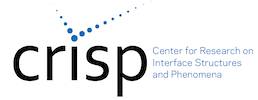Our kits are currently being reviewed and updated by a team of collaborative, innovative and interdisciplinary educators who wish to enhance the educational opportunities for students. These dedicated teachers are members of CRISP Collaborative Science for All (CCSA) as well as local educators.
Click to see the SCSU CRISP Module Template used by CCSA for improving and updating the CRISP demos and kits. Each kit page offers a CRISP developed teacher module and CRISP aligned standards (both NGSS and CCSS)
Kit Request form

Sound waves and light waves reflect from surfaces. The angle of incidence equals the angle of reflection. This is called the law of reflection. Sound waves and light waves change speed when they pass across the boundary between two substances with different densities, such as air and glass. This causes them to change direction and this effect is called refraction. We can use water waves in a ripple tank to show this effect.
Adapted from IEC Hodson Light Box & Optical Set
Subject(s):
Optics and Light, Wavelength,
Objectives:
- Students will be able to compare the focal length of plane, circular, and parabolic mirror at varying distances from a light source
- Students will be able to compare the optical scattering of square, convex, and concave translucent mediums at varying distances from a light source
Materials in this kit:
Hodson Optics Kit and a 12V power source or adapter (for standard outlets) to accommodate banana plugs
Safety:
Avoid direct eye contact with the bright lighting
Additional Resources:
Lighting and Optics Teacher Module
Lighting and Optics CRISP aligned standards
Lighting and Optics Guide from Hodson
Lighting and Optics Student Sheet
Hodson Optics Kit Manual and Resource Guide – http://www.iecpl.com.au/z_exp/hl2060-001book.pdf
Reading on optics and lighting at http://www.bbc.co.uk/education/guides/zdwnb9q/revision/2
STEM Careers:
Standards:
MS-PS4-2. Develop and use a model to describe that waves are reflected, absorbed, or transmitted through various materials.
HS-PS4-1. Use mathematical representations to support a claim regarding relationships among the frequency, wavelength, and speed of waves traveling in various media.
HS-PS4-3. Evaluate the claims, evidence, and reasoning behind the idea that electromagnetic radiation can be described either by a wave model or a particle model, and that for some situations one model is more useful than the other.
RST.11-12.8 Evaluate the hypotheses, data, analysis, and conclusions in a science or technical text, verifying the data when possible and corroborating or challenging conclusions with other sources of information.
MP.2 Reason abstractly and quantitatively.
MP.4 Model with mathematics
